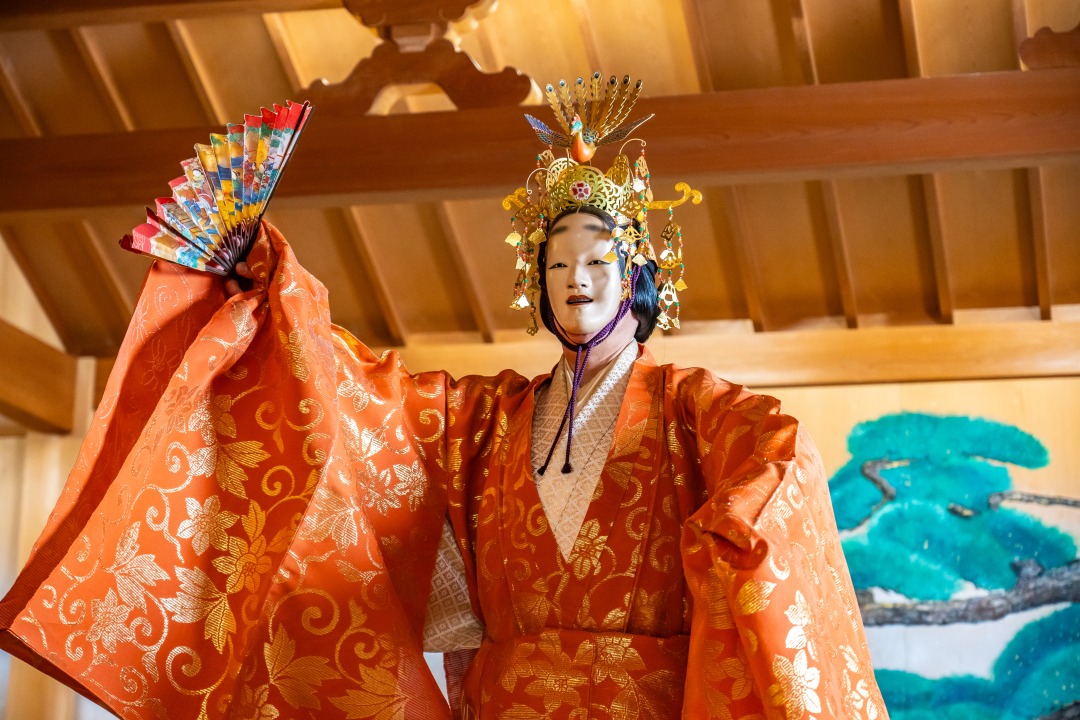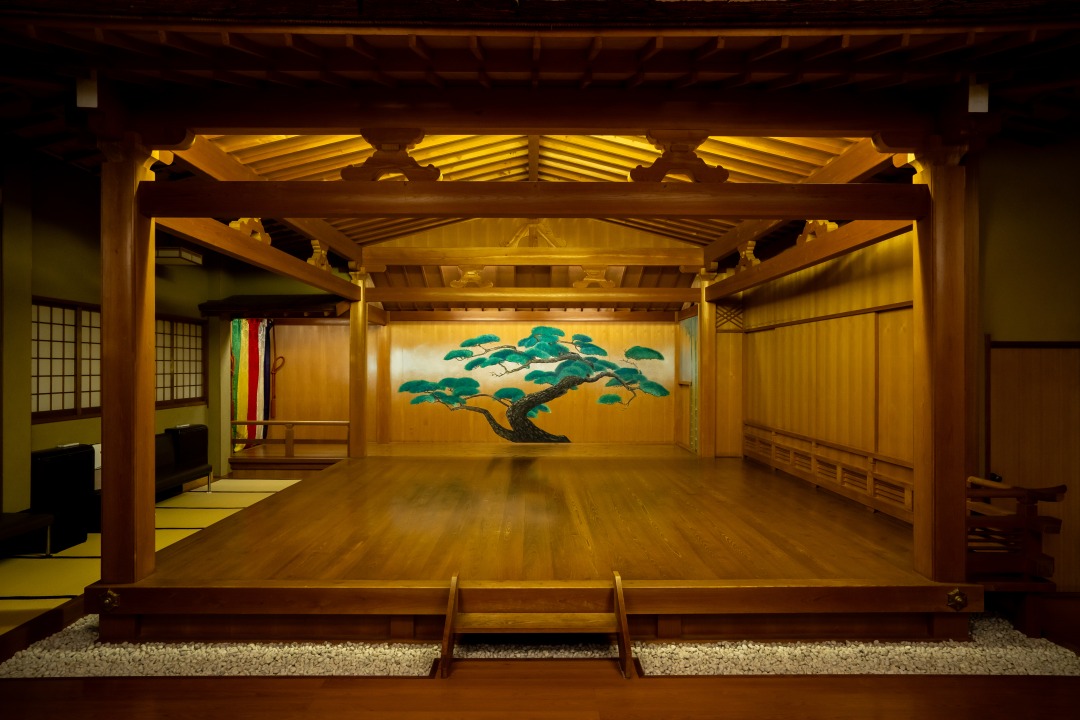

The story takes place in the 14th century, a time of transition from the Middle Ages to the Early Modern period when Renaissance culture was about to flourish in Italy amidst the chaos of the plague and the rise of the Ottoman Empire.
Similarly, in Japan, people lived lives without knowing what the future would hold due to crop failures, epidemics, and wars.
At a time when life had little value and there was no entertainment, “Noh Performance” appeared among the masses like a ray of hope. Noh, which turned religious behaviors such as praying to the gods and mourning the dead into entertainment, was eventually elevated to an art form with the help of the geniuses Kanami and Zeami.
The prototype of Noh currently performed in Japan was formed in the 14th and 15th centuries. Today, it is performed with lyrics that are almost exactly as they were back then. We will take you to the pinnacle of Japan’s proud “yellow beauty” that has remained unchanged for over 650 years.
*Noh is designated as a UNESCO intangible cultural heritage.
There are approximately 250 pieces in total in Noh. Originally they were performed in sets of five were performed all day long until the sun went down. Therefore, the songs can be divided into the following five categories depending on the order in which they are performed.
1st REPERTOIRE: A song in which the main character is a god. Various types of gods that are rooted in Japanese religious views, such as Buddhism and Shinto, appear as main characters. (Representative works: Takasago, Oimatsu, Oimatsu, etc.)
2nd REPERTOIRE: A song in which the main character is a man. Also known as “shuramono,” the motifs are often the vengeful spirits of samurai who served during the Genpei War. (Representative works: Atsumori, Yashima, Xiangu)
3rd REPERTOIRE: A song in which the main character is a woman. The recurring motif is of a lovelorn woman’s ghost, doomed to wander without attaining enlightenment even in death.
4th REPERTOIRE: Songs featuring a protagonist with a troubled mind (among other songs). The main character is a lovesick madwoman, but this repertoire is also known as a “miscellaneous work” for its exploration of human tragedies and quests for revenge.
5th REPERTOIRE: A song in which the main characters are demons/tengu. The leading roles consist of supernatural creatures like demons, dragon gods, and tengu, making it the most captivating performance of the five acts and a perfect finale for the day’s program.
Here we will briefly introduce how to enjoy Noh.
The way to enjoy Noh is similar to that of classical music or ballet. The songs are played and sung in the same way as they were 650 years ago and are in an ancient language that even Japanese audiences cannot understand.
However, strangely enough, by surrendering your mind to the thickness of the sound, the speed, and the movement of your body, you can begin to sense the “meaning of life” even without words, just as people in the 14th century were intoxicated.
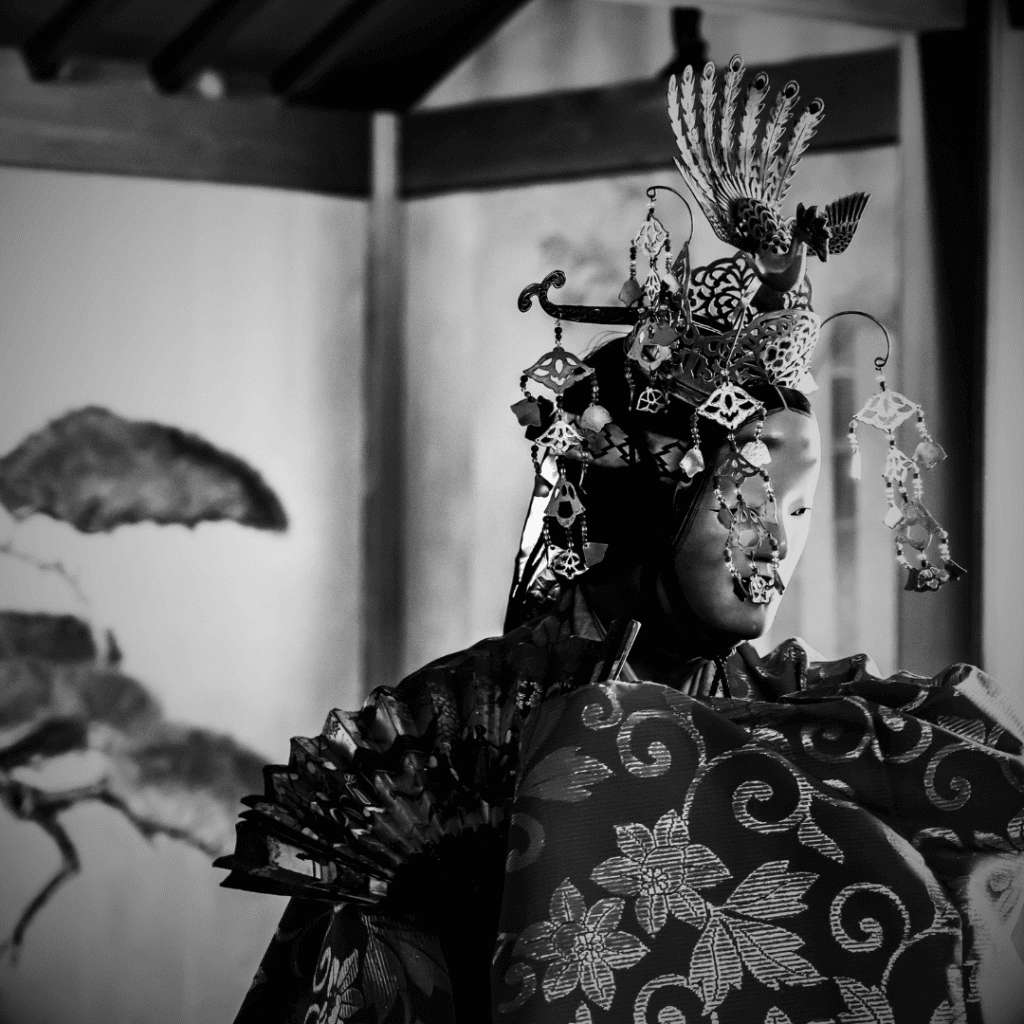
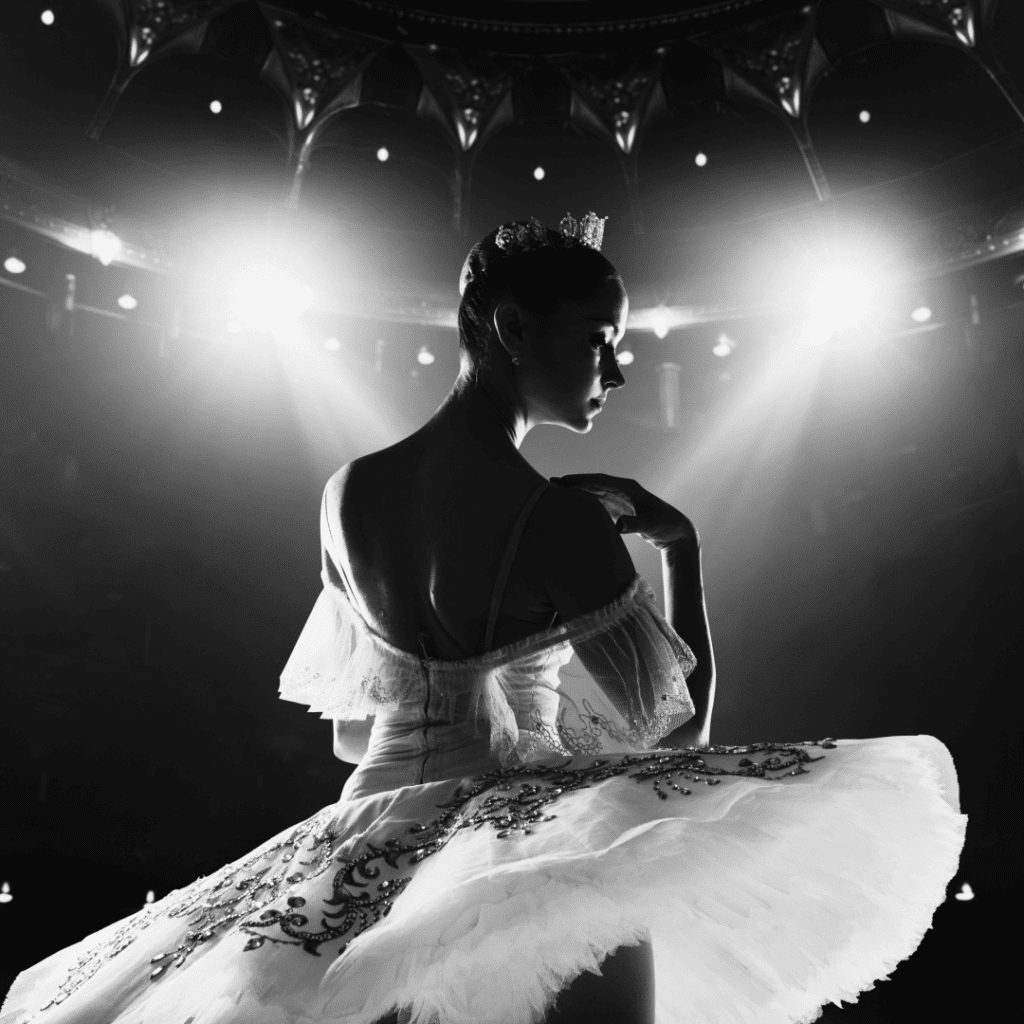
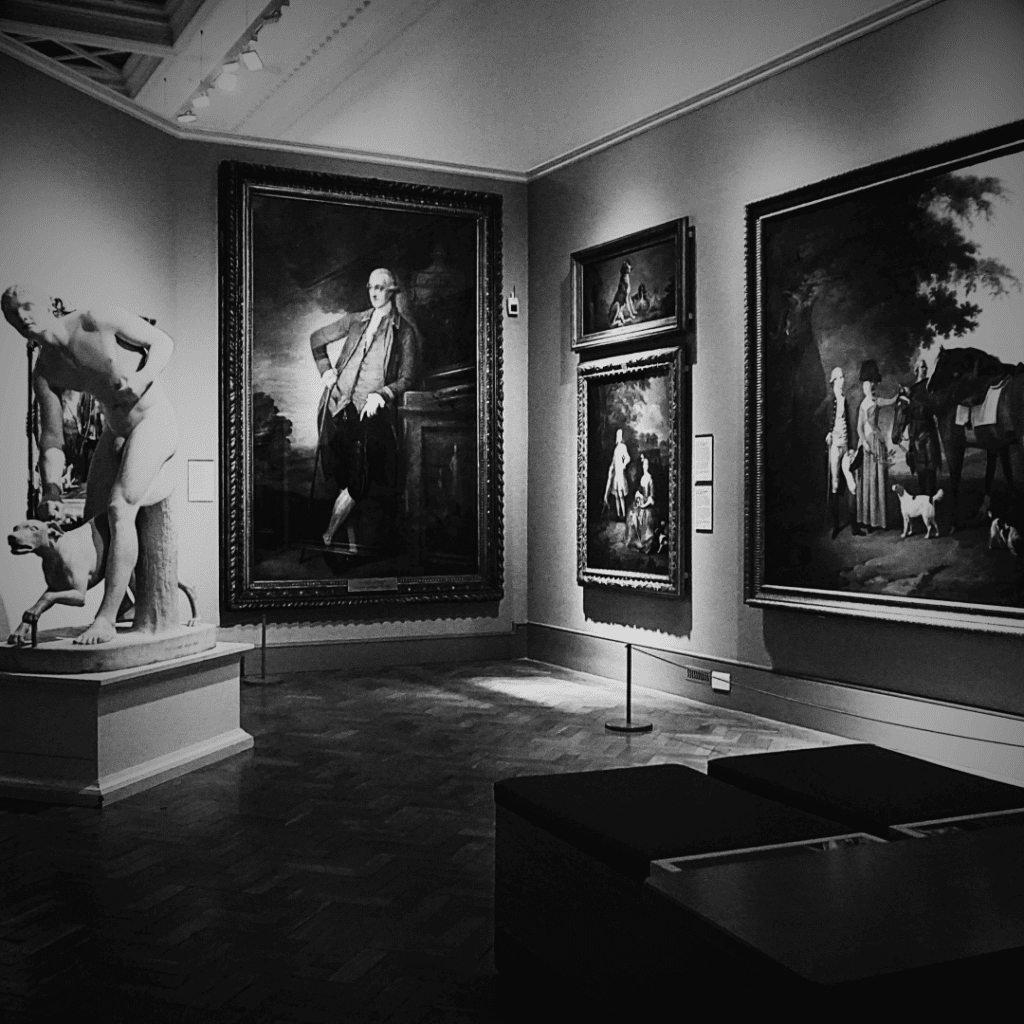
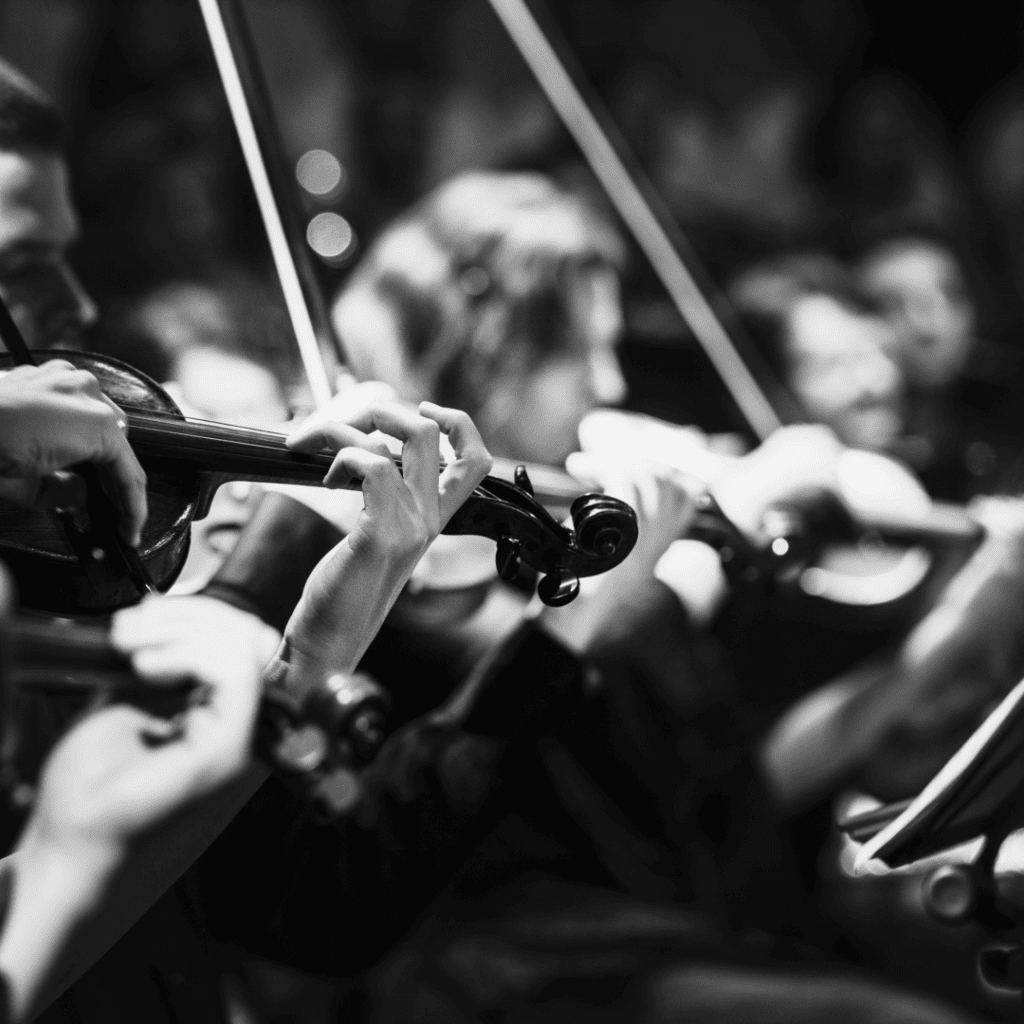
To help you understand the story, we have prepared some hints for you. We introduce below the meaning behind the different stage areas and the significance of the most important performance elements. Click or hover over the marked spots to find out more!
